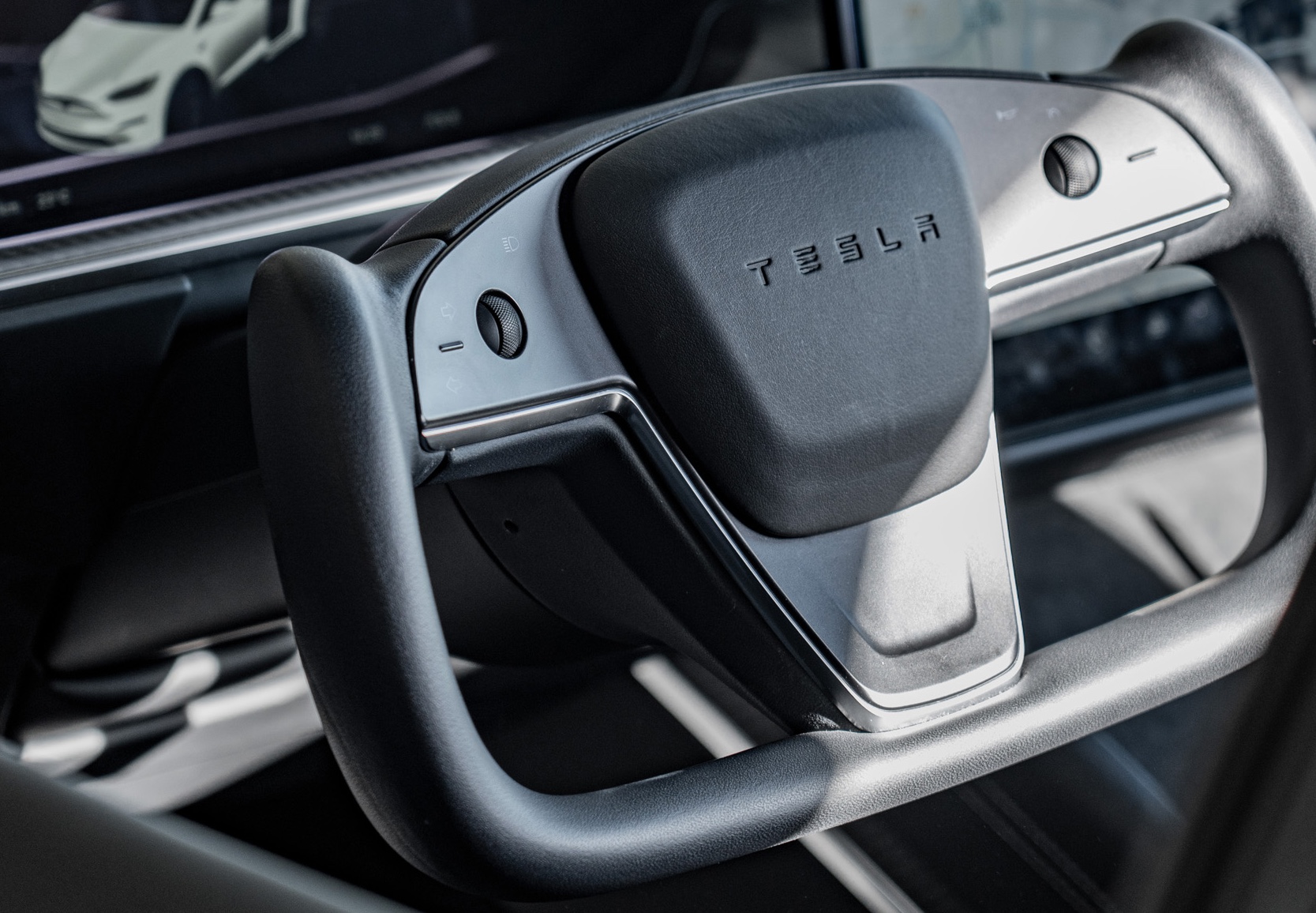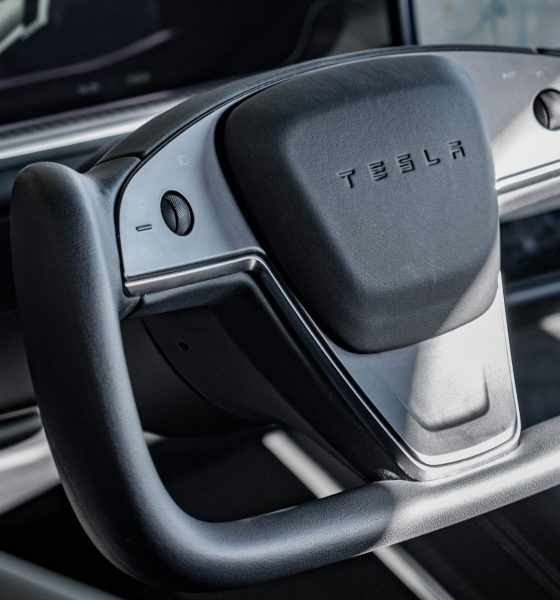A former Tesla executive has seemingly confirmed the claims that were outlined in a report from The Wall Street Journal (WSJ), which provided some context behind the rift between Tesla and the Joe Biden administration. As per the report, Tesla officials attempted to forge close ties with the Biden administration multiple times after the president’s inauguration, but they were rejected.
Tesla was a dominant force in the United States electric vehicle sector in early 2021 when the Biden administration was making plans to boost electric cars in the country. But while Tesla produced about two-thirds of EVs on US roads then, the company’s workforce was also not unionized. Thus, despite Tesla’s efforts to reach out to the Biden administration in an effort to connect Musk to the US President, the company reportedly received the cold shoulder.
Citing people reportedly familiar with the matter, The Wall Street Journal noted that “Biden officials didn’t want to anger the powerful United Auto Workers union, which leaned on the White House to keep its distance from Musk.” The WSJ report also cited a former official from the UAW, who noted that “We made it clear to the administration about where things were” and that “we didn’t have to make an ultimatum. They understood.”
It was reportedly these factors that led to Tesla being snubbed by the Biden administration in its EV summit and US President Joe Biden crediting GM CEO Mary Barra for leading and electrifying “the entire automobile industry.” Musk, together with Tesla’s leaders, were reportedly outraged by the US President’s comments, especially since in the fourth quarter of 2021, when Biden credited the GM CEO for being an EV leader, Tesla delivered over 115,000 electric cars in the United States, while General Motors produced just 26 EVs.
This is a rare article about Tesla/Elon, where I can’t find any factual errors and it has good context.— Rohan Patel (@rohanspatel) July 28, 2024
In comments on X, former Tesla Vice President of Global Public Policy and Business Development Rohan Patel confirmed that The Wall Street Journal’s report was accurate. In his post, Patel noted that “This is a rare article about Tesla/Elon, where I can’t find any factual errors and it has good context.”
Elon Musk’s notable shift from being a supporter of the Biden administration into one of the US President’s critics is unfortunate, but a look at the CEO’s comments over the years does show that his disdain did not come out of nowhere. In January 2021, just a few months after Biden was elected as the US President, Musk told Fortune in a lengthy phone call that he was delighted about Biden’s presidential win.
“I’m super fired up that the new administration is focused on climate. I think this is great. I feel very optimistic about the future of sustainable energy with the new administration. Not that we should get complacent or anything, but the wind is at our back for solving the climate crisis with the new administration,” Musk said at the time.
Just a few weeks after that, Musk noted in an appearance at the Joe Rogan Experience podcast that he had talked to the Biden administration about the prospect of adopting a carbon tax. The Biden administration believed that a carbon tax would be too politically difficult, Musk claimed.
“I talked to the Biden administration, and they were like ‘Well, this seems too politically difficult.’ And I was like, ‘Well, this is obviously a thing that should happen.’ And by the way, SpaceX would be paying a carbon tax too. So I’m like, you know, I think we should pay it too. It’s not like we shouldn’t have carbon generating things. It’s just that there’s got to be a price on this stuff,” Musk said.
By September 2021, Musk admitted in an interview at the 2021 Code Conference that the Biden administration is “not the friendliest administration,” and “maybe a little biased.” He also noted that the Biden government “seems to be controlled by unions.” At this time, Tesla had already been snubbed at the White House EV summit, and Musk had started posting jokes about Biden “sleeping.” This was highlighted when Musk joked about Biden being asleep after the US President completely ignored SpaceX’s Inspiration4 mission, a private, All-American spaceflight trip with the first-ever all-civilian crew that raised over $200 million for St. Jude Children’s Research Hospital.
Don’t hesitate to contact us with news tips. Just send a message to simon@teslarati.com to give us a heads up.

News
Tesla (TSLA) receives “Buy” rating and $551 PT from Canaccord Genuity
He also maintained a “Buy” rating for TSLA stock over the company’s improving long-term outlook, which is driven by autonomy and robotics.

Canaccord Genuity analyst George Gianarikas raised his Tesla (NASDAQ:TSLA) price target from $482 to $551. He also maintained a “Buy” rating for TSLA stock over the company’s improving long-term outlook, which is driven by autonomy and robotics.
The analyst’s updated note
Gianarikas lowered his 4Q25 delivery estimates but pointed to several positive factors in the Tesla story. He noted that EV adoption in emerging markets is gaining pace, and progress in FSD and the Robotaxi rollout in 2026 represent major upside drivers. Further progress in the Optimus program next year could also add more momentum for the electric vehicle maker.
“Overall, yes, 4Q25 delivery expectations are being revised lower. However, the reset in the US EV market is laying the groundwork for a more durable and attractive long-term demand environment.
“At the same time, EV penetration in emerging markets is accelerating, reinforcing Tesla’s potential multi‑year growth runway beyond the US. Global progress in FSD and the anticipated rollout of a larger robotaxi fleet in 2026 are increasingly important components of the Tesla equity story and could provide sentiment tailwinds,” the analyst wrote.
Tesla’s busy 2026
The upcoming year would be a busy one for Tesla, considering the company’s plans and targets. The autonomous two-seat Cybercab has been confirmed to start production sometime in Q2 2026, as per Elon Musk during the 2025 Annual Shareholder Meeting.
Apart from this, Tesla is also expected to unveil the next-generation Roadster on April 1, 2026. Tesla is also expected to start high-volume production of the Tesla Semi in Nevada next year.
Apart from vehicle launches, Tesla has expressed its intentions to significantly ramp the rollout of FSD to several regions worldwide, such as Europe. Plans are also underway to launch more Robotaxi networks in several more key areas across the United States.
News
Waymo sues Santa Monica over order to halt overnight charging sessions
In its complaint, Waymo argued that its self-driving cars’ operations do not constitute a public nuisance, and compliance with the city’s order would cause the company irreparable harm.

Waymo has filed a lawsuit against the City of Santa Monica in Los Angeles County Superior Court, seeking to block an order that requires the company to cease overnight charging at two facilities.
In its complaint, Waymo argued that its self-driving cars’ operations do not constitute a public nuisance, and compliance with the city’s order would cause the company irreparable harm.
Nuisance claims
As noted in a report from the Los Angeles Times, Waymo’s two charging sites at Euclid Street and Broadway have operated for about a year, supporting the company’s growing fleet with round-the-clock activity. Unfortunately, this has also resulted in residents in the area reportedly being unable to sleep due to incessant beeping from self-driving taxis that are moving in and out of the charging stations around the clock.
Frustrated residents have protested against the Waymos by blocking the vehicles’ paths, placing cones, and “stacking” cars to create backups. This has also resulted in multiple calls to the police.
Last month, the city issued an order to Waymo and its charging partner, Voltera, to cease overnight operations at the charging locations, stating that the self-driving vehicles’ activities at night were a public nuisance. A December 15 meeting yielded no agreement on mitigations like software rerouting. Waymo proposed changes, but the city reportedly insisted that nothing would satisfy the irate residents.
“We are disappointed that the City has chosen an adversarial path over a collaborative one. The City’s position has been to insist that no actions taken or proposed by Waymo would satisfy the complaining neighbors and therefore must be deemed insufficient,” a Waymo spokesperson stated.
Waymo pushes back
In its legal complaint, Waymo stated that its “activities at the Broadway Facilities do not constitute a public nuisance.” The company also noted that it “faces imminent and irreparable harm to its operations, employees, and customers” from the city’s order. The suit also stated that the city was fully aware that the Voltera charging sites would be operating around the clock to support Waymo’s self-driving taxis.
The company highlighted over one million trips in Santa Monica since launch, with more than 50,000 rides starting or ending there in November alone. Waymo also criticized the city for adopting a contentious strategy against businesses.
“The City of Santa Monica’s recent actions are inconsistent with its stated goal of attracting investment. At a time when the City faces a serious fiscal crisis, officials are choosing to obstruct properly permitted investment rather than fostering a ‘ready for business’ environment,” Waymo stated.
News
Tesla FSD v14.2.2 is getting rave reviews from drivers
So far, early testers have reported buttery-smooth drives with confident performance, even at night or on twisty roads.

Tesla Full Self-Driving (Supervised) v14.2.2 is receiving positive reviews from owners, with several drivers praising the build’s lack of hesitation during lane changes and its smoother decision-making, among others.
The update, which started rolling out on Monday, also adds features like dynamic arrival pin adjustment. So far, early testers have reported buttery-smooth drives with confident performance, even at night or on twisty roads.
Owners highlight major improvements
Longtime Tesla owner and FSD user @BLKMDL3 shared a detailed 10-hour impression of FSD v14.2.2, noting that the system exhibited “zero lane change hesitation” and “extremely refined” lane choices. He praised Mad Max mode’s performance, stellar parking in locations including ticket dispensers, and impressive canyon runs even in dark conditions.
Fellow FSD user Dan Burkland reported an hour of FSD v14.2.2’s nighttime driving with “zero hesitations” and “buttery smooth” confidence reminiscent of Robotaxi rides in areas such as Austin, Texas. Veteran FSD user Whole Mars Catalog also demonstrated voice navigation via Grok, while Tesla owner Devin Olsen completed a nearly two-hour drive with FSD v14.2.2 in heavy traffic and rain with strong performance.
Closer to unsupervised
FSD has been receiving rave reviews, even from Tesla’s competitors. Xpeng CEO He Xiaopeng, for one, offered fresh praise for FSD v14.2 after visiting Silicon Valley. Following extended test drives of Tesla vehicles running the latest FSD software, He stated that the system has made major strides, reinforcing his view that Tesla’s approach to autonomy is indeed the proper path towards autonomy.
According to He, Tesla’s FSD has evolved from a smooth Level 2 advanced driver assistance system into what he described as a “near-Level 4” experience in terms of capabilities. While acknowledging that areas of improvement are still present, the Xpeng CEO stated that FSD’s current iteration significantly surpasses last year’s capabilities. He also reiterated his belief that Tesla’s strategy of using the same autonomous software and hardware architecture across private vehicles and robotaxis is the right long-term approach, as it would allow users to bypass intermediate autonomy stages and move closer to Level 4 functionality.










